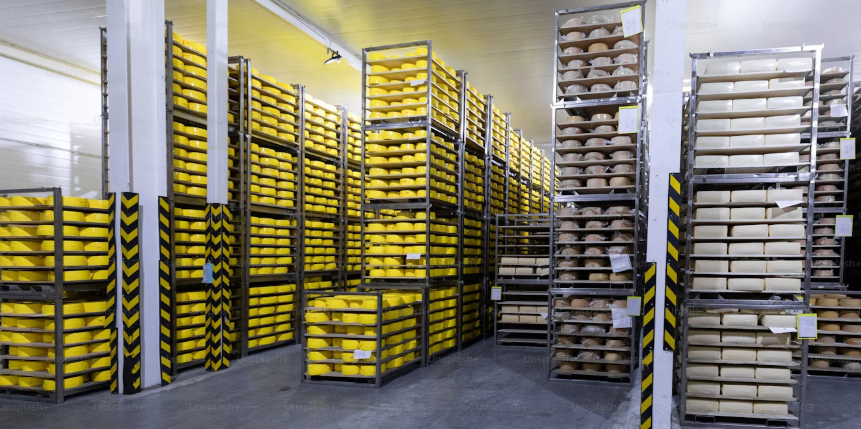1. Import Trade Procurement Process
1.1 Identifying Needs and Planning
- Assessing Requirements: Determine the types, quantities, quality standards, and delivery schedules of the imported goods based on your company’s production plans, sales forecasts, or project needs.
- Budget Planning: Create a procurement budget that accounts for the costs of goods, transportation, duties, insurance, and other expenses.

1.2 Supplier Sourcing and Evaluation
- Supplier Search: Utilize multiple channels to identify potential suppliers, such as international trade shows, online platforms, industry association recommendations, and trade consulates.
- Supplier Evaluation: Assess suppliers based on reputation, product quality, price competitiveness, production capacity, delivery reliability, and after-sales service. You may request product samples and check reviews from other customers.
- Risk Assessment: Evaluate the political stability, trade policies, and currency stability of the supplier’s country.
1.3 Requesting Quotes and Negotiating
- Sending Requests for Quotes (RFQ): Contact selected suppliers, providing detailed specifications, quantities, delivery deadlines, and payment terms. Request formal quotes.
- Analyzing Quotes: Compare supplier quotes to negotiate more favorable prices, delivery schedules, and payment terms. Maintain open and flexible communication during negotiations while ensuring your company’s interests are protected.
1.4 Contract Signing
- Contract Drafting: Once a supplier is selected, draft and sign a procurement contract. The contract should clearly outline both parties’ rights and responsibilities, including product specifications, quantities, quality standards, price, delivery terms, packaging, transportation, payment terms, and penalties for non-compliance.
- Legal Review: For significant contracts, it may be beneficial to have a professional lawyer review the contract to ensure its legality and enforceability.
1.5 Goods Transportation and Tracking
- Transport Arrangements: Organize the transportation of goods according to the agreed terms (sea freight, air freight, road transport, etc.). Choose reliable freight forwarders or logistics companies to ensure timely and secure delivery.
- Tracking: Regularly monitor the progress of the shipment and communicate with suppliers, freight forwarders, and logistics companies to address any potential issues, such as delays, damage, or loss of goods.
1.6 Customs Clearance
- Document Preparation: Prepare the necessary documents for customs clearance, such as the bill of lading, invoice, packing list, certificate of origin, inspection certificates, etc.
- Clearing Customs: Pay duties, VAT, and other taxes to ensure smooth customs clearance.
1.7 Goods Inspection and Inventory
- Inspection: Upon arrival, inspect the goods to ensure they meet the contract’s specifications. This includes checking quantities, quality, and packaging. Any discrepancies should be promptly addressed with the supplier.
- Inventory Management: After passing inspection, store the goods and update the inventory system accordingly.
1.8 Payment and Settlement
- Payment: Make payments according to the terms set out in the contract. Payment methods may include letters of credit, wire transfers, or collections.
- Cost Settlement: Finalize the settlement of procurement costs, including goods cost, transportation fees, duties, and insurance, to ensure the accuracy of the procurement budget.
2. Key Considerations in Import Procurement
2.1 Legal and Regulatory Compliance
- Regulatory Knowledge: Familiarize yourself with the trade laws and regulations of both the importing and exporting countries, including customs laws, import/export restrictions, and quality standards. Ensure compliance to avoid fines or confiscation of goods.
- Monitoring Policy Changes: Stay updated on changes in trade policies such as tariff adjustments and new trade barriers, and adjust your procurement strategy accordingly.
2.2 Quality Control
- Establishing Quality Control Standards: Implement strict quality control measures and inspection processes for imported goods. This may include specifying inspection methods and standards in the contract, or hiring third-party inspection agencies.
- Issue Resolution: If quality issues arise, quickly communicate with the supplier to resolve the situation, whether through corrective actions or compensation.
2.3 Risk Management
- Risk Identification: Recognize and assess the various risks involved in the procurement process, such as supplier risk, transportation risk, currency fluctuations, and market risks.
- Mitigation Strategies: Develop strategies to manage these risks, such as securing insurance contracts, using hedging tools for currency risks, and creating emergency reserves.
- Supplier Risk Monitoring: Establish a supplier risk management mechanism that involves periodic assessments and monitoring of suppliers to detect and address potential issues early.
2.4 Effective Communication and Coordination
- Collaboration Across Stakeholders: Maintain good communication with suppliers, freight forwarders, logistics companies, and customs brokers. Respond to emails and phone calls promptly and address problems efficiently to ensure a smooth procurement process.
- Feedback Mechanism: Set up effective communication channels and feedback systems to stay informed about the needs and concerns of all stakeholders and continually improve procurement practices.
2.5 Sustainable Supply Chain Management
- Sustainability Focus: Choose suppliers that prioritize environmental sustainability and corporate social responsibility. Evaluate whether their production processes comply with environmental regulations and labor laws.
- Sustainable Development: Work with suppliers to develop shared sustainability goals and plans to enhance the overall competitiveness of the supply chain.
Import Procurement Process Flow
| Step | Action |
|---|---|
| 1. Identifying Needs | Determine product types, quantities, and required specifications. |
| 2. Supplier Search | Find potential suppliers via trade shows, online platforms, and referrals. |
| 3. Request for Quotes | Send detailed RFQs and collect supplier quotes. |
| 4. Negotiation | Negotiate prices, delivery schedules, and payment terms. |
| 5. Contract Signing | Draft and sign a procurement contract. |
| 6. Transport and Tracking | Organize shipment and track progress to ensure timely delivery. |
| 7. Customs Clearance | Complete customs procedures and pay necessary taxes and fees. |
| 8. Inspection & Inventory | Inspect goods upon arrival and update inventory. |
| 9. Payment & Settlement | Complete payment and reconcile costs. |
Conclusion
Effective import procurement requires a comprehensive approach that integrates proper planning, supplier evaluation, risk management, and compliance with regulations. By following a structured process and keeping key considerations in mind, companies can ensure a smooth procurement cycle and maximize the benefits of international trade.
